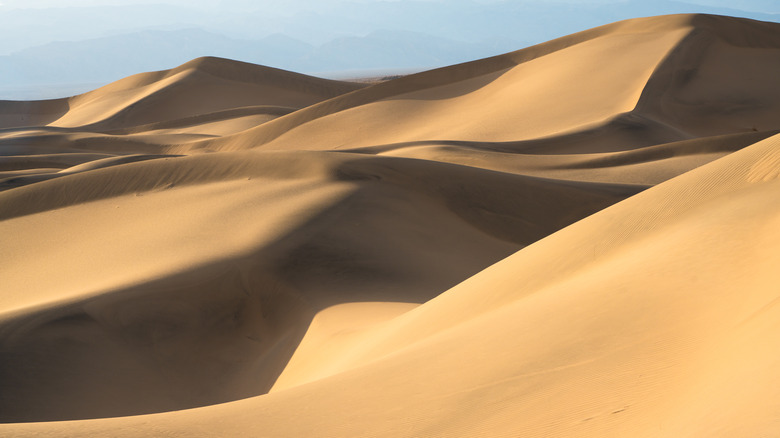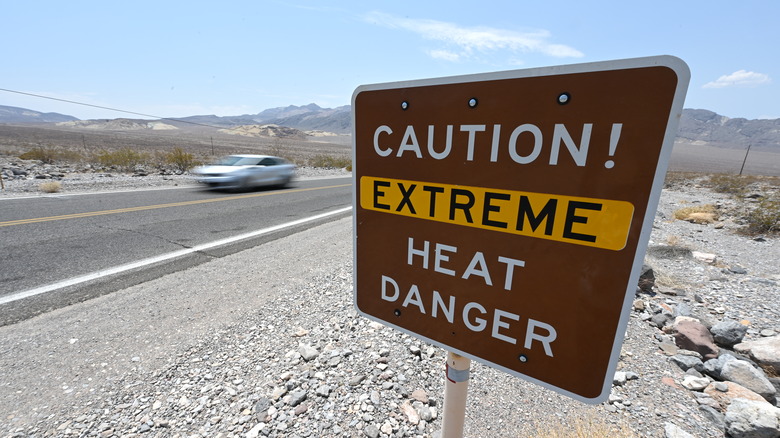This US National Park Is One Of The Most Dangerous Places On Earth
The first national park, Yellowstone, was created by President Ulysses S. Grant in 1872 (per the U.S. Department of the Interior), offering tourists a wealth of natural wonder to experience firsthand. With nature's geographical splendors there also came potentially dangerous wildlife — bears, bison, and more. The landscape itself can present extreme hazards to unknowing visitors. Yellowstone itself has extremely hot geysers that have proven injurious, even fatal, to tourists. The Grand Canyon, which measures as much as a mile deep, has ledges that even mildly adventurous people can fall from.
In terms of deadliness, though, there is one park that has often rivaled all others in the U.S.: Death Valley, a name given to it by a pioneer who in 1847 was part of a group stranded there (via The U.S. Sun). Located between California and Nevada, Death Valley is a massive region with an area of over 3.4 million acres, says the National Park Service, known for its sand dunes, mountainous terrain, the remote mansion known as "Scotty's Castle" (per Trip Advisor), and arguably, most of all for its extreme heat (via Voice of America). Though not constant, the park's heat has been record-breaking in the past, with its highest known temperature being 134 degrees Fahrenheit. Like many wilderness areas, there's more than one potentially fatal aspect to Death Valley.
There are more dangers in Death Valley than record-breaking heat
According to Outside Magazine, six people died in Death Valley while hiking or climbing in the period from January to November of 2021 alone. Many of the deaths likely stemmed from the area's high temperatures. While weather is one of the easiest things to be harmed by in Death Valley, including very low temperatures during winter months, single-car accidents are the most common cause of death in the park, according to a post at the National Park Service.
There are a number of additional hazards that they list as well. Abandoned mine shafts and tunnels offer a heavy risk of collapse or toxic fumes inside. Flash floods, even in the desert, can be extremely dangerous. Visitors should take precautions against hantavirus infection — Death Valley is home to many small animals, and rodents living there can spread this potentially deadly respiratory disease. There's also the human factor, with potentially dangerous encounters with people illegally cultivating marijuana.
Technology may or may not be helpful. WiFi and phone services may not be available, and according to a 2016 article posted at Ars Technica, GPS has often led people deeper into the park, where they became lost and, in some cases, died stranded.

